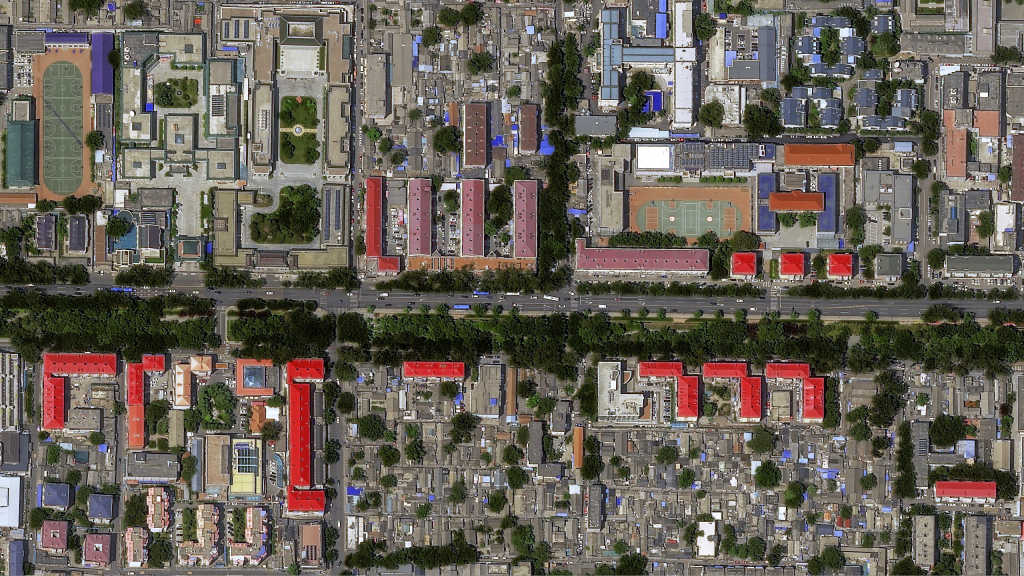As demand for near real-time analytics grows, providers of geospatial solutions are faced with the decision to invest in their own powerful computing resources, or to leverage cloud computing capabilities owned and managed by other companies.
With practically unlimited scalability, cloud computing addresses the challenges of transferring large volumes of geospatial data and rapidly processing the data with machine learning algorithms to provide actionable information.
At UP42, we’ve built a secure cloud-based infrastructure that allows customers to access satellite imagery from multiple providers and perform analytics with off-the-shelf and custom algorithms.
Here are the top five benefits of cloud computing for analytics companies using geospatial information to serve a wide variety of industries:
1. Cutting-edge hardware without the capital investment
Efficiently accessing, processing, and analyzing geospatial data requires up-to-date hardware. In particular, the complex mathematical calculations in machine learning algorithms depend on powerful central processing units (CPU) and graphic processing units (GPU).
Keeping up with advances in computing technology can be cost prohibitive for individual companies, but when speed is a competitive advantage, nothing less than the best will suffice.
Many companies find it more cost effective to build a robust and reliable product within the infrastructure available on the cloud. This arrangement allows them to focus on developing solutions rather than owning and maintaining their own data center.
“With cloud computing, UP42 is lowering the barrier to entry for acquiring and processing data,” says Barry Nagel, UP42 CTO. “Any size company can now deliver custom analytical services without a huge investment in hardware.”
2. Scalable to accommodate parallel processing
Cloud providers meet demand for scalable processing resources by renting time on the necessary equipment. UP42 uses high-performance GPU from Nvidia and has access to CPU and random-access memory (RAM) capable of running hundreds of parallel jobs in the cloud.
The ability to allocate processing resources on demand is a key advantage for machine learning solutions that involve a high volume of repetitive calculations.
3. Access to multiple datasets
A cloud-based infrastructure and back-end software facilitates searching multiple datasets for selected areas of interest and retrieving the desired data.
For added efficiency, application programming interfaces (API) act as intermediaries so that applications talk to each other and exchange information. The cloud allows UP42 to develop and download new datasets quicker than ever before.
UP42 is an open platform for any useful data that has a geospatial component, including satellite and aerial imagery, weather data, and digital elevation models (DEM).
The solution provider concentrates on developing the applications that perform analytics while UP42 acquires the correct data and provides the computing power for processing.
4. Off-the-shelf algorithms
Many geospatial companies are small start-ups that want to offer a specific solution, such as an NDVI for precision agriculture. These businesses can develop prototypes sooner by starting with off-the-shelf algorithms and augmenting them with unique custom algorithms.
A series of “blocks” or basic algorithms that are already used in other solutions are available to customers on the UP42 cloud platform.
This shortcut also encourages companies to explore new applications and discover how valuable geospatial data can be.

5. Data security
Cloud computing providers ensure that the virtual machines, the portion of the physical machines that they are selling, are separated for each user and are inaccessible to external parties.
At UP42, we split these virtual machines into discrete parts called containers using Docker technology. In addition, the built-in security features of the Kubernetes container orchestration platform and state-of-the-art encryption techniques work together to protect user data and prevent security breaches.
UP42 customers can be confident that their data is accessible only to approved users.
Geospatial in the cloud
The cloud concept allows users to focus on the end product – the analytic information that can be extracted from geospatial data – rather than worrying about major capital investments and resource constraints.
The opportunities offered by cloud computing include automatically scaling computing resources to handle demand fluctuations, accessing multiple datasets, and efficient and secure data handling and processing.
For more information about UP42’s cloud platform, visit up42.com.




